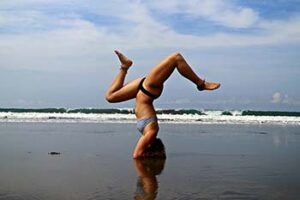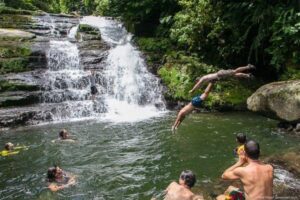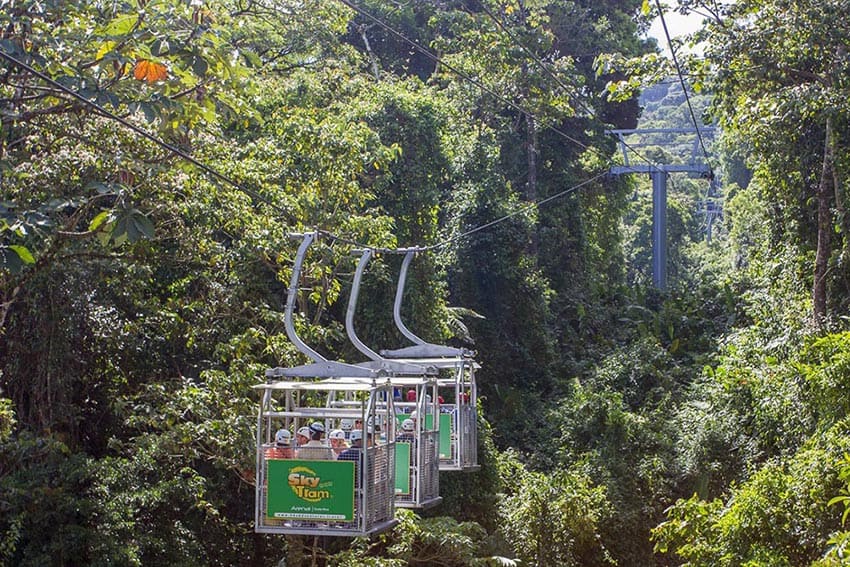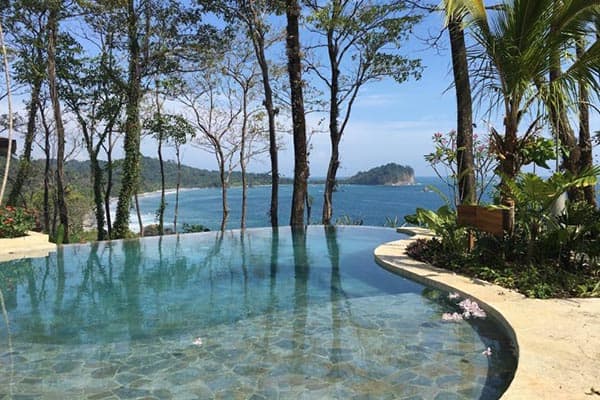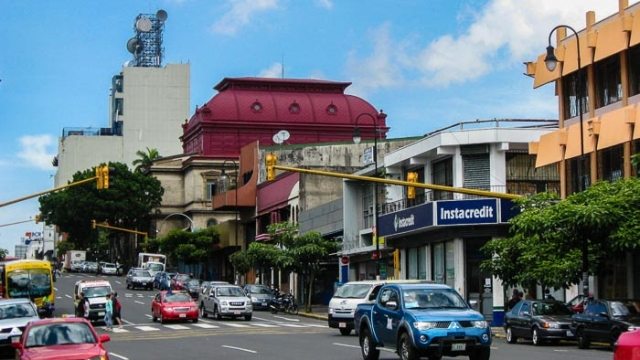
Road Trip in Costa Rica: Things You Should Know Before You Go
By Deb Schaffer
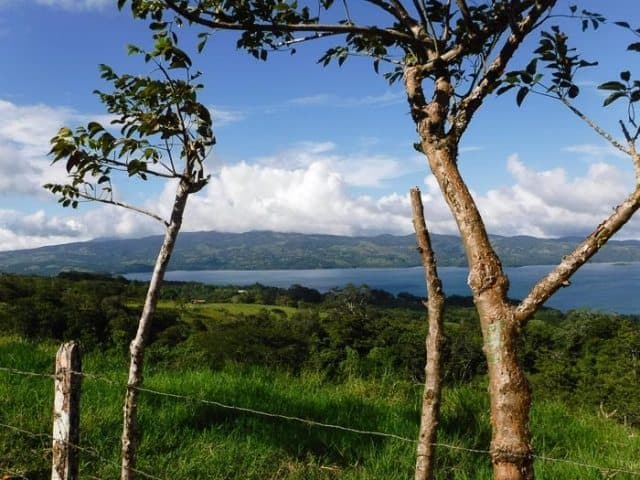
After our third time through a toll booth, we think we’ve got it right. The GPS is screaming to stay left as we come around the circle.
We look over and see the first toll booth we went through, correctly it turns out, about 5 minutes ago.
| Driving the Cerro de la Muerte in Costa Rica |
We’re road-tripping through Costa Rica and despite the few dollars we’ve just spent figuring out which road to Quepos, we’re enjoying the ride
Renting a car in Costa Rica
Rental cars can be a minefield, even in the United States. We rented a Daihatsu Terios, a small SUV, and added a Garmin GPS which cost about $75 for the 10 days.
We also took the additional insurance, costing about $250. A mobile phone came with the car. No matter what happened to the car, we weren’t responsible.
The car rental was part of a package that included hotel rooms, purchased from Costa Rican Trails. Separately, the daily rate with the car rental firm is about $44 per day, not including the additional insurance.
The SUV had a manual transmission, which is pretty standard in Costa Rica. If you can’t drive a manual transmission, you can request an automatic but it may cost more.
GPS Required
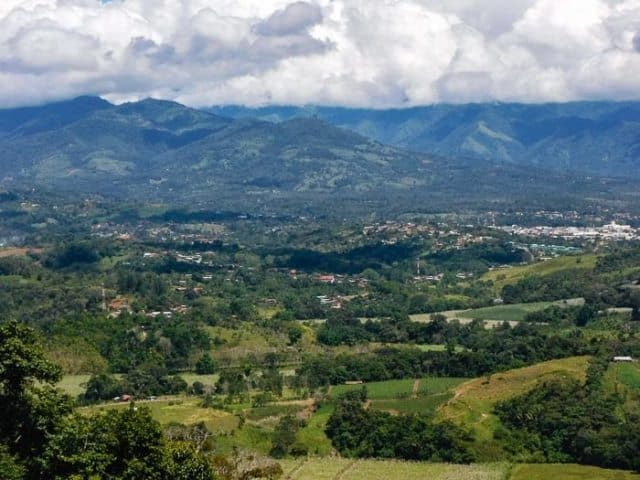
You must have a GPS in Costa Rica. The roads are not always marked, and maps are seldom accurate. Most buildings outside of the city of San Jose don’t have a street address.
However, the main attractions of the country are programmed into the GPS, so follow the computer’s instructions and you should be fine. Nothing is very far away, but it takes twice as long to get there.
One of the highlights of our trip was the Doka Estate Coffee Plantation. It is about 25 KM or 15 miles from our hotel. We scheduled the 9:00 a.m. tour. We gave ourselves an hour to get there and made it in about 45 minutes.
The roads in town tend to be very congested, and the streets are narrow and winding. There are traffic lights every block and very little parking. Cars are often double-parked and buses share the same routes. “Fast” is not going to happen.
Get out of town and the traffic disappears. The narrow and winding roads continue, as do the buses. Periodically, you’ll be driving through towns and school zones where the speed limit drops to 25 KPH. Slow down and enjoy the ride.
Speed limits are key
Costa Rica is very mountainous. That means most roads have some sort of incline and are seldom straight for any distance. The speed limit is usually around 40 KPH (about 25 MPH) but that is often optimistic for visitors. And it seems to be just a suggestion for the locals.
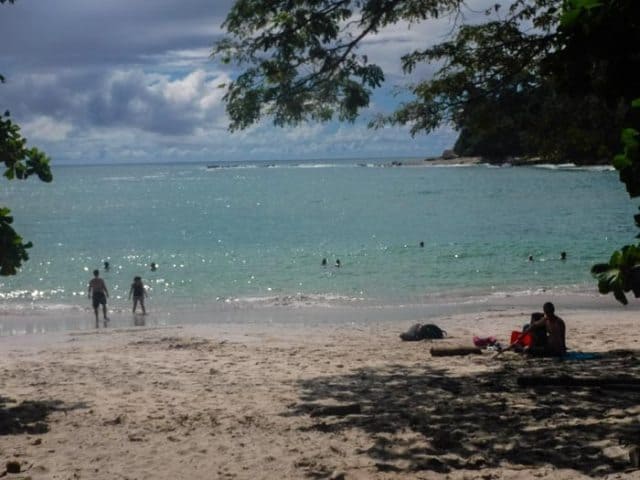
Speeding violations come with a $500 U.S. ticket that is paid from the deposit left with the rental car company. They say there are cameras on the highways that record license plates speeding and mail you a ticket. I never saw one – but I really wasn’t looking. A tip, don’t speed!
While traveling down the main highway in San Jose which had three lanes in both directions, we noticed that the buses were picking people up on the right side of the road.
Yes, that’s right. We’re all traveling at 90 KPH (55 MPH) or faster on what appears to be a freeway and buses are stopping in the right lane to drop off and pick up riders. Drivers were swerving into the center lane.
Local drivers often do not look before changing lanes. They typically don’t use turn signals and don’t be surprised to see cars on the wrong side of the road trying to get around you. Merge lanes exist but are very short. Take a deep breath and don’t let it get to you.
When they build roads, they seldom incorporate shoulders on the sides of the road. Often, in the place of a shoulder, you’ll find a two-foot deep ditch for water runoff during the rainy season.
There’s often no place to go if something jumps in front of you or you need to stop. The locals stop in the middle of the street and expect you to go around.
Toll Roads

There are toll roads in Costa Rica. Even though we went through a single toll gate several times on several different days during our stay in Alajuela, we were never stopped and asked to pay.
In fact, we never saw anyone stopping to pay a toll. We were just waved through.
While on our way to Quepos we did find another toll booth. The toll was $1.00 U.S. or 500 colones. We paid the toll to the genial toll booth guy and then panicked that we were going the wrong way.
This feeling was assisted by the GPS voice who insisted we turn around and head back out. After a couple of wrong turns, two more toll booths and a total of about $5.00, we got on the right road and headed for the beach.
The moral of that story? Use common sense when listening to the GPS voice, they’re not always right!
Stay with the vehicle
When the nice man from the car rental company dropped off the car, he made a point to tell us to never leave the car alone with anything in it, particularly near the beach.
We took him at his word, and always made sure wherever we left the car, there was nothing of value in it and/or the parking was secure. We always took all the electronics with us into the hotel room in the evening. We never had any problems and the car was fine.

Don’t leave your common sense at the airport. Would you leave your car filled with expensive items on the street in a town you don’t know in the United States? I think not.
We were excited to visit Monteverde. The cloud forest sounded very mysterious and we were scheduled to do a zip line tour through the treetops. We filled up the car with gasoline in Arenal and headed around the lake to Monteverde.
The drive was great for about the first two hours. The road was in decent condition and had lots of twists and turns with some beautiful views of the lake.
Then we got to the final road into Monteverde from Tilaran. This road is why you rent a 4-wheel drive and go slowly.
This final 43 KM – about 27 miles – of the road is gravel. Which, in Costa Rica, means loose rocks, embedded stones the size of softballs and potholes.
There’s no rushing through this and if you don’t have a 4-wheel drive it will be even slower.
This part of the road took us about an hour and a half to travel. We did stop a few times to take pictures of the gorgeous valley and the dairy cows that populate the area.
When we finally reached our hotel and the jolting stopped, we were thrilled to just sit and watch the birds and clouds skip over the mountains.
On our way back toward San Jose and the southern beaches, the road was just as bad, but it only took about an hour to get to the main road. We were grateful to feel pavement again north of San Jose.
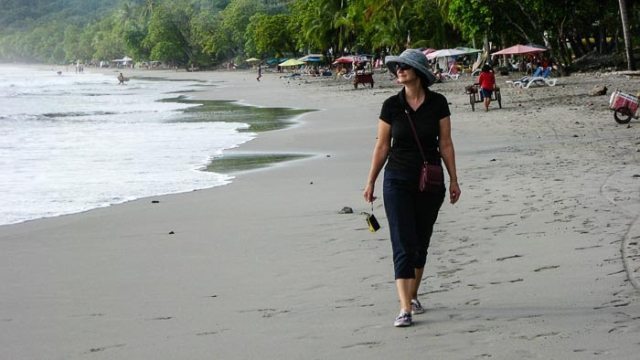
The straightaways
In the ten days we spent exploring Costa Rica, we did find a few straight roads. These were primarily on the coast between San Jose and Manual Antonio.
Once you leave the Central Valley, the drive is much less curvy. And the drive along the beach from Jaco to Bejuco took us by some incredible views of the ocean and beaches. If the constant elevation changes and turns wear you out, head to the coast.
Costa Rica’s traffic laws are very similar to the United States, including the importance of the double-yellow line. There is a $600 U.S. fine for breaching this law. No problem you think.
Until you get on the Inter-American Highway, known locally as the Cerro de la Muerte, through the mountains and you’re behind a belching, diesel-spewing truck that is struggling to make it up and over the pass.
Another feature of Costa Rican roads is that there are very few passing lanes in the
mountains. The ones that exist tend to be pretty short. Since the inclines can be steep and the cars do not tend to be high-powered it can be a trial getting around these vehicles.
Eventually, most start passing on the double-yellow. Is it scary? Yes. Does it work? Yes. Did we get caught or killed? No, not this time. Nor did the other dozen cars that moved around those trucks.
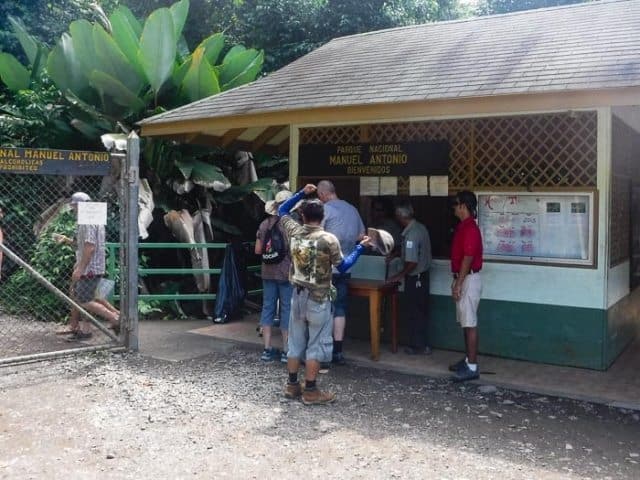
Although driving in Costa Rica is an interesting experience, it is the only way to truly see the country. Without the freedom of a car, you won’t be able to stop, take pictures, and marvel at the incredible beauty of the countryside.
Having the car enabled us to have lunch at the beautiful Hotel Monterey del Mar on the road to Quepos.
We were able to visit Charlie’s Jungle House and the beautiful, deserted Playa Matapalo.
Being able to set our own schedule allowed us to stop at the hummingbird gardens and to have lunch at Bazooka’s in San Isidro de General while 10 American ex-pats told us the stories of their life in Costa Rica. And then visit their homes a few minutes from the restaurant.
On your next trip to Costa Rica, don’t be shuttled from one experience to another. Rent a car and have the freedom to get off the beaten path, even if that path is a bit rocky. Pura Vida!
We purchased the Flexi-Drive tour, a hotel and a rental car package from Costa Rican Trails. The company tailored the package to fit our travel plans.
Costa Rican Trails USA: 1-888-803-3344, Canada: 1-866-865-7013
The rental car company was Sixt. This company was new to us, but there are offices throughout the U.S., Central America, and Europe. The service we received when picking up and returning the car was very business-like and efficient.
Sixt 1 888 SIXT CAR (749 8227) in the U.S.
We visited the Doka Estate coffee plantation in Alajuela. They give guided tours of the plantation, explaining how coffee is grown, harvested, and packaged for sale. Tours are Monday through Friday: 8:00 a.m. to 5:00 p.m. Saturdays and Sundays: 8:00 a.m. to 4:00 p.m.
Doka Estate 1 888 9 GO DOKA
We stopped and had lunch at the Hotel Monterey Del Mar. The hotel is located south of Jaco off Highway 34. Follow the signs. This resort is steps from the beach, and the food was good as well!
Monterey Del Mar, Playa Esterillos (506) 2778-8787
We have friends that run Charlie’s Jungle House and we stopped by to say hello and visit for a few minutes. Playa Matapalo Beach is one of the most beautiful beaches I saw while in Costa Rica.
Charlie’s Jungle House, Playa Matapalo Beach +506-2787-5005
We had lunch at Bazookas in San Isidro. The restaurant’s motto is “American and Apple Pie.” It’s a favorite hangout for the local American and Canadian expats that live in the area. The prices were very reasonable and the food was delicious.
Bazookas, San Isidro de General
Although the restaurant is on the main highway in town, it’s best to use your GPS to locate it.

Deb Schaffer is an avid traveler, writer, and golfer. When not setting up a tee time or photographing Colorado, she’s planning the next trip or blogging on her website. She’s just published her first book on Amazon, “Play golf, Colorado!” and is working on the second edition.
- Missouri Sports Travel Adventure: From Landmarks to Ballparks - January 21, 2026
- What First-Time Visitors Get Wrong About Visiting Iceland - January 15, 2026
- Bareboat Charter vs all-inclusive Crewed: Which Luxury Charter Fits You? - December 29, 2025


